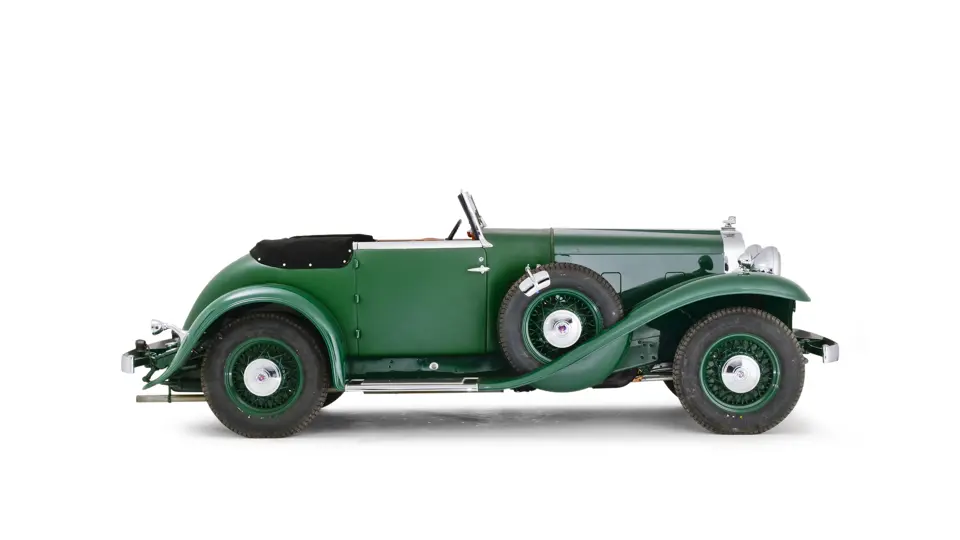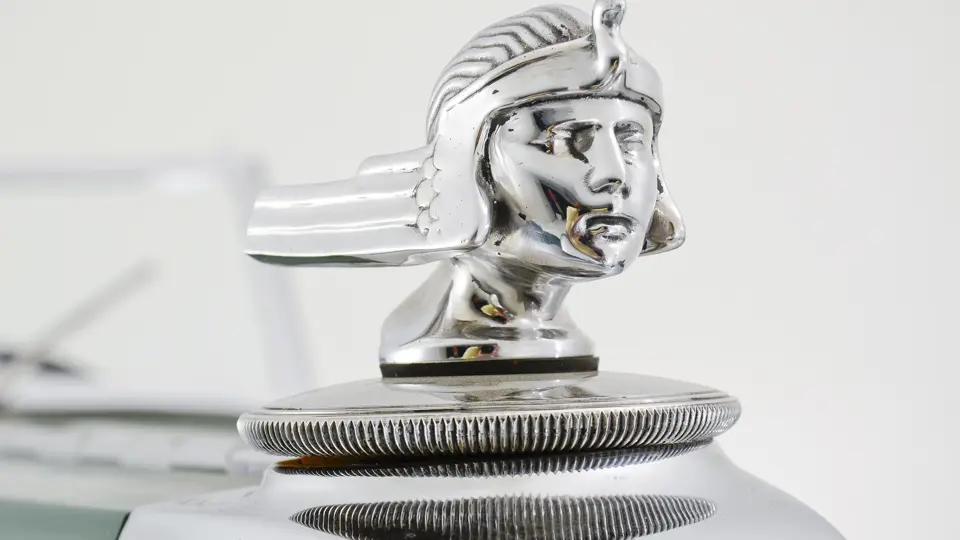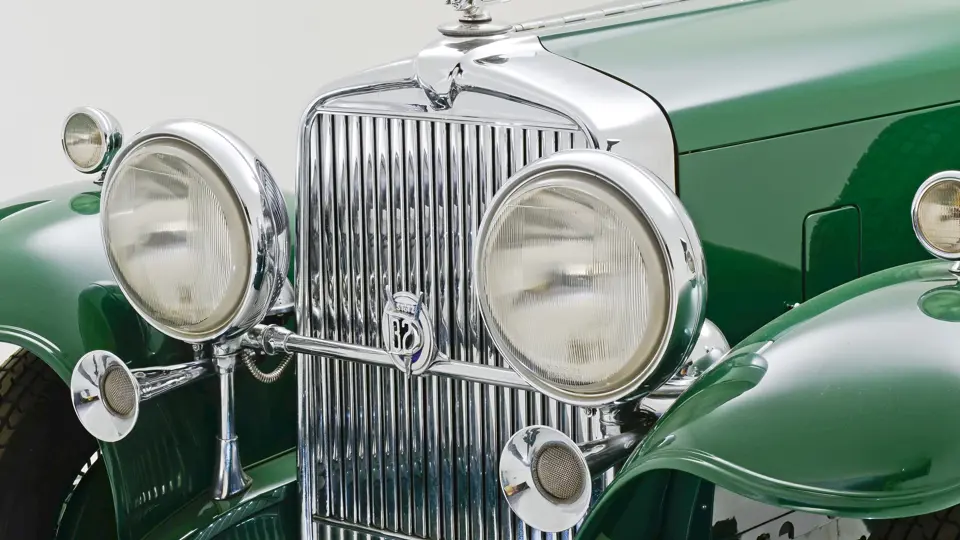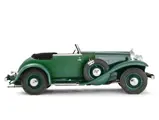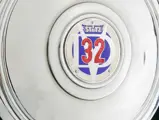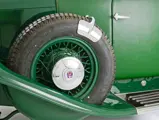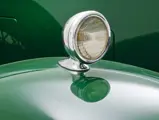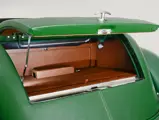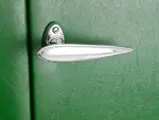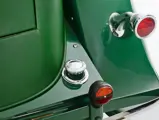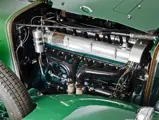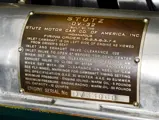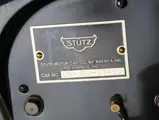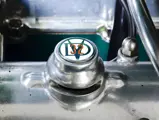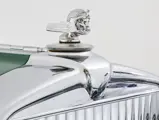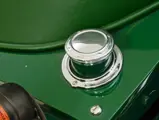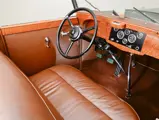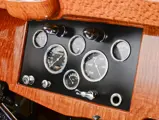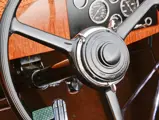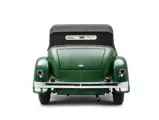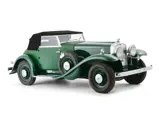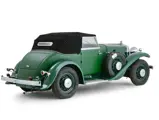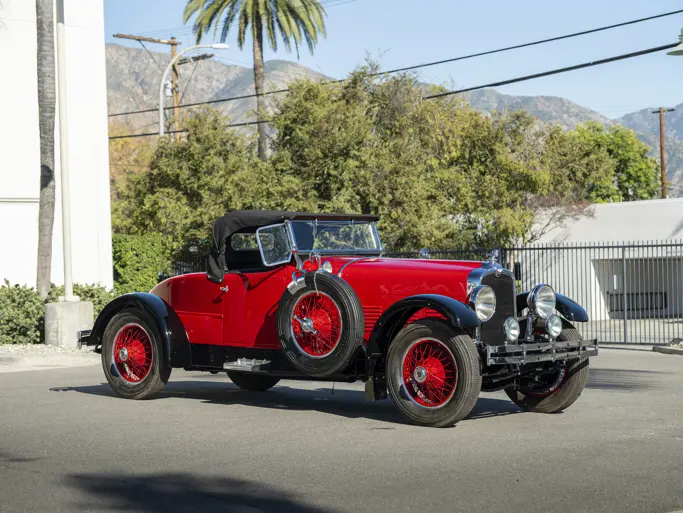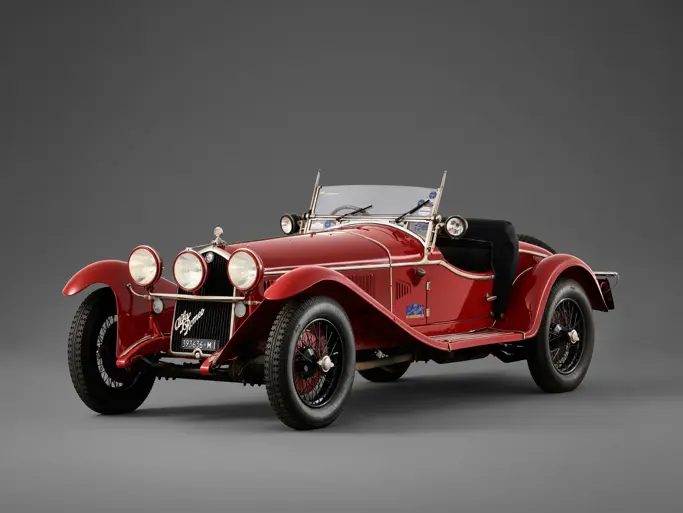156 bhp, 322.1 cu. in. DOHC inline eight-cylinder engine, three-speed manual transmission, front and rear semi-elliptic leaf spring suspension, solid front axle, live rear axle, and four-wheel vacuum-assisted hydraulic drum brakes. Wheelbase: 116"
- Formerly part of the Dr. Barbara Attwood and Harrah Collections
- Engine rebuilt, brakes overhauled and new tires fitted in current ownership
- Multiple award-winning restoration
No model name is so indelibly linked to Stutz as “Bearcat,” which appeared in three versions between its 1912 introduction and its maker’s demise during the 1930s. In 1915, the Bearcat assumed legendary status when “Cannonball” Baker drove one from San Diego to New York in just 11 days, seven hours and 15 minutes, setting a new transcontinental record.
From 1915 to 1917, the “White Squadron” racing team carried the Stutz banner, and while their cars were not, strictly speaking, Bearcats, they earned the team prize at the 1915 Vanderbilt Cup and American Grand Prize races. Board and dirt track races comprised the rest of the 1915 season, with Earl Cooper earning the most points and an unofficial national driver’s championship.
Cooper did well again in 1916, and at season’s end, he was victorious in a 50-mile match race at Ascot in Los Angeles, nosing out both a Mercer and a Duesenberg. In 1917, AAA-sanctioned racing was curtailed after United States’ entry into World War I, but Cooper entered Stutz No. 8 into six contests, winning four of them. He also accumulated the most points that season, but the AAA was reluctant to name a champion due to the somber wartime environment. Cooper continued to race No. 8 after the war, entering the 1919 Indy 500, where he ran as high as third place at the halfway mark, when he suffered a stuck valve. His mechanic, Reeves Dalton, brought the ailing car to the finish in 11th.
After a period of instability and the departure of Harry Stutz, the Stutz Motor Car Company came under the direction of Hungarian-born engineer Fredrick Moskovics. He completely redesigned the Stutz car with a new six-cylinder overhead-cam engine, a double-drop chassis frame and worm-gear rear axle, safety glass and four-wheel hydraulic brakes. The 92-bhp “Vertical 8” engine debuted for 1926.
Stutz returned to racing with the Vertical 8 at the Stevens Challenge Trophy race of 1927 for closed-body production cars, where a steel-bodied Stutz sedan averaged 68.44 mph for 24 hours at Indianapolis Motor Speedway to win the event. The Stutz Black Hawk, a two-passenger aluminum-bodied speedster, was the AAA Stock Car champion of 1927, winning every race it entered.
Stutz is perhaps best remembered for the race it did not win, a match race resulting from a $25,000 wager between Moskovics and his friend Charles Weymann, the inventor of the Weymann fabric body construction for which Stutz held the American rights. Pitting Moskovics’ Black Hawk against Weymann’s Hispano-Suiza, the favorite due to its much larger-displacement engine, the race was run at Indianapolis three days prior to the Stevens Challenge, with the Stutz swallowing a valve after 56 laps and handing the race to the Hispano. Despite the mechanical failure, Weymann was so impressed with the Stutz that he entered one at Le Mans the following year.
Just one week after the Hispano match race, driver Frank Lockhart was killed at Daytona driving a purpose-built Black Hawk Special racer, halting overt Stutz competition efforts immediately. Weymann, however, forged ahead and engaged Edouard Brisson, a veteran Le Mans contestant, to drive at Le Mans, who aggressively challenged the favored Bentleys. Gaining the lead at the sixth hour, the Stutz held its own into the night, but eventually the Bentley took the lead and Stutz earned a sterling second-place finish.
In May 1931, the new DV-32 engine (DV for “Dual Valve,” “32” for “four valves per cylinder”) updated the old Vertical Eight with twin overhead cams and substantially better breathing. In fact, power output jumped by 40 percent to 156 bhp, and it surpassed all but the Duesenberg Model J in its efficiency.
Appropriately, a new Bearcat was created, with the former MA-28 Torpedo speedster becoming the “DV-28” Bearcat in mid-1931. This two-passenger, 134.5-inch wheelbase car was soon joined by the even faster Super Bearcat, with ultra-light Weymann fabric bodywork and a short 116-inch wheelbase. The Super Bearcat had a tight convertible top, roll-up windows and an advanced integral luggage trunk.
Ultimately, the DV-32 was the company’s greatest achievement and its swan song. Just 384 cars of all types were built in 1931 and about 120 the following year. Nearly that many saw life in 1933, but that was about the end. Just six cars, indistinguishable from ’33s, were built in 1934. The company still exuded optimism, announcing the availability of cars into 1936, but these were undoubtedly unsold 1933s and ’34s. Stutz’s day had reached its end.
This DV-32 Super Bearcat has an interesting history. Owned in the 1950s by a Joe Streeter of Oklahoma, it was acquired by the noted Harrah Collection circa 1974. Dr. Barbara Mae Atwood purchased it at the September 1984 dispersal auction and committed it to John Sanders’ Antique Auto Restoration in Rockford, Illinois for a complete restoration.
The Weymann fabric body was carefully deconstructed and rebuilt as necessary, and the mechanicals were rebuilt as required. Upon completion, it earned AACA National Junior and Senior First awards and the AACA President’s Cup in 1988. AACA Grand National First honors and Preservation status followed in 1989, followed by Third in Class that year at Pebble Beach.
Today, the Super Bearcat remains impressive, notwithstanding the age of its restoration, including the sheet metal, paint finish and Weymann fabric bodywork. Brown carpeting and handsome interior woodwork complement the brown leather upholstery. The restored instruments are quite comprehensive, including an ammeter, coolant temperature and oil-pressure gauges, as well as a tachometer. Under the current owner, who acquired the car in early 2009, the mechanicals were comprehensively overhauled, and the engine was completely rebuilt and fitted with new pistons and valves. New tires were fitted and the brakes were overhauled. The car features a chrome-plated grille guard, dual Pilot Ray lights, dual side-mounted spares and a distinctive Stutz radiator mascot depicting the Egyptian sun god Ra.
Super Bearcats, extremely rare when new, are believed to number less than 10 today. With its multiple award-winning restoration as well as its exceptional provenance dating back to the 1950s, this superb DV-32 Super Bearcat surely ranks among the finest surviving examples today.
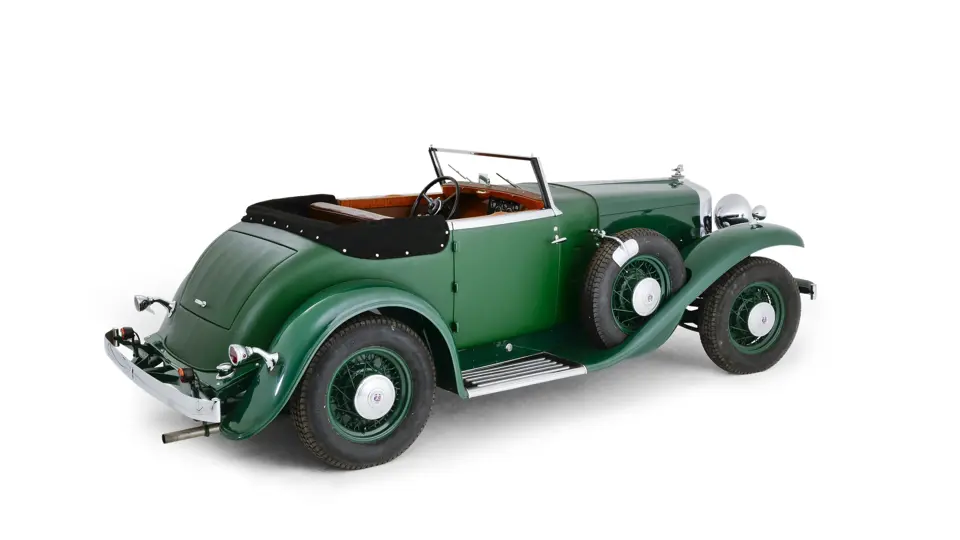

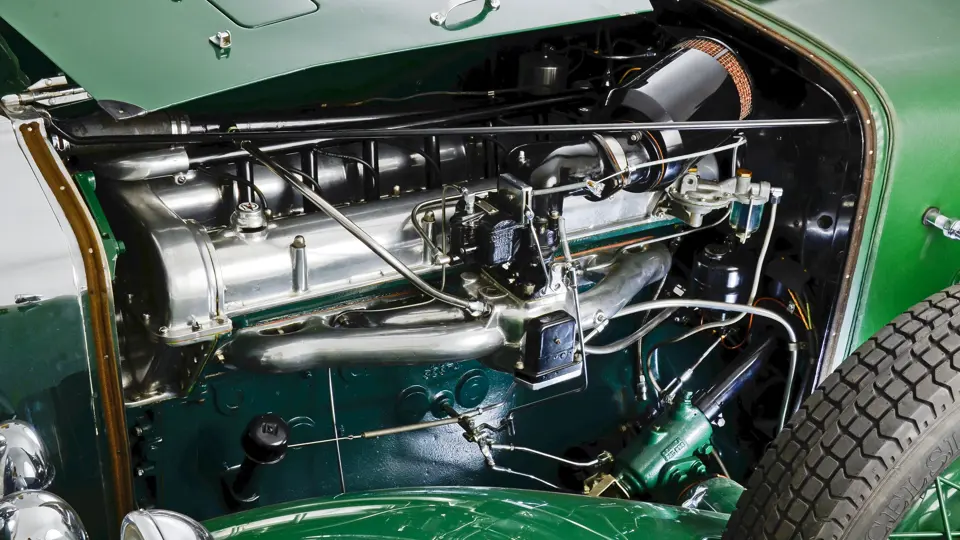

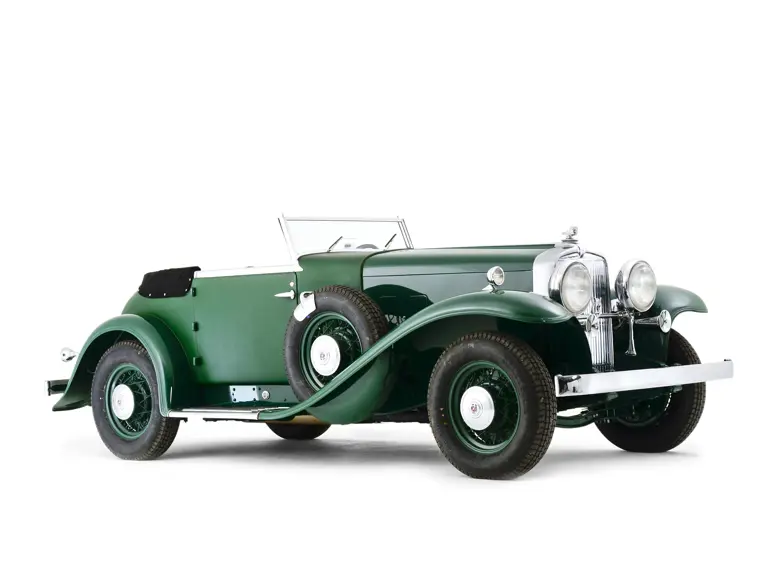

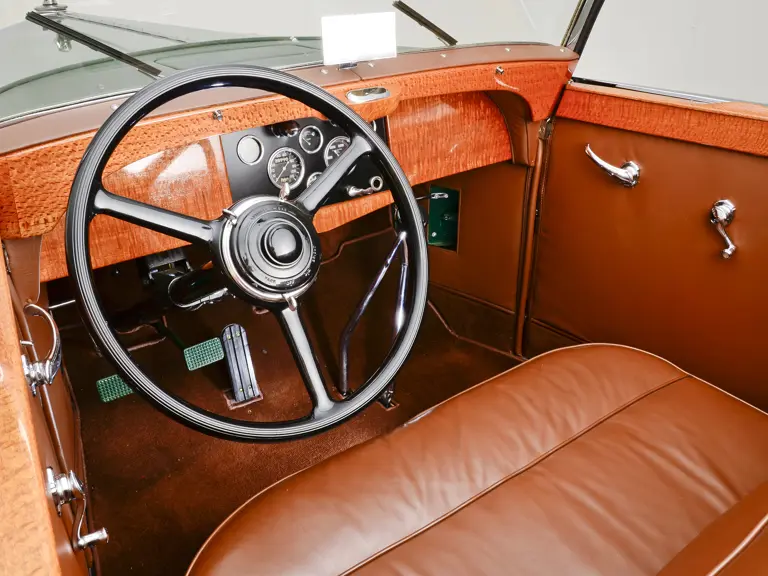
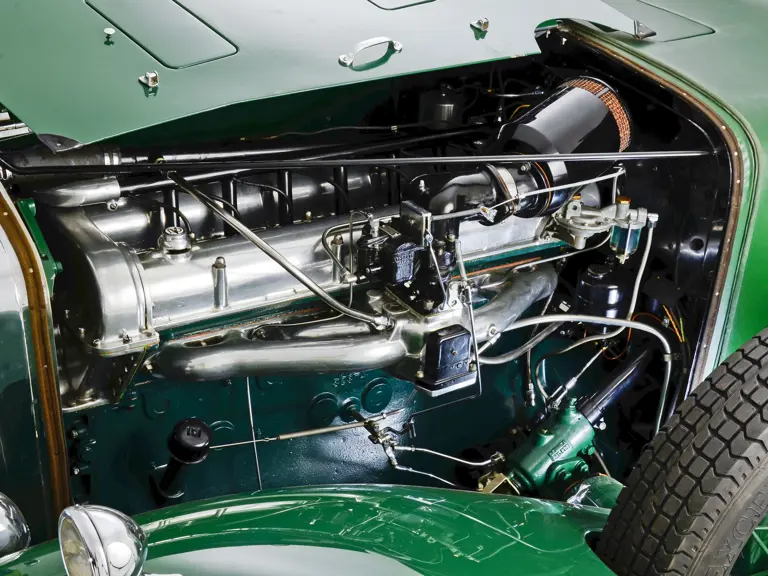
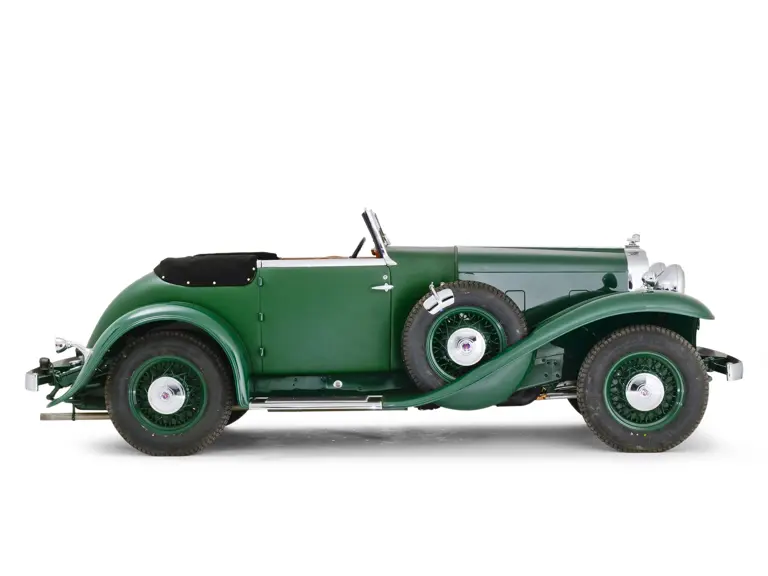
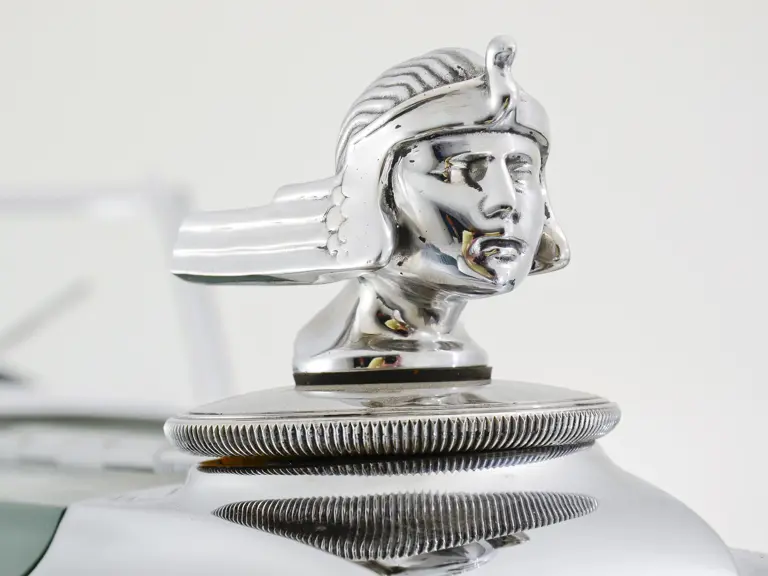
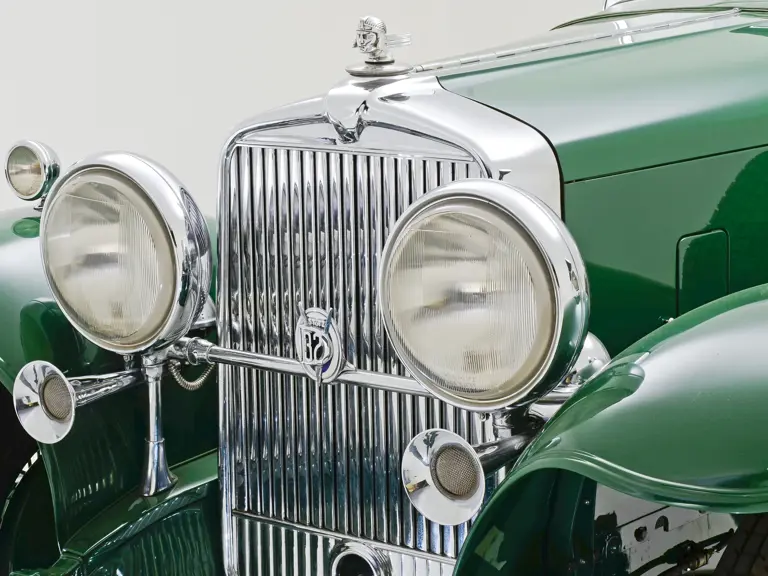
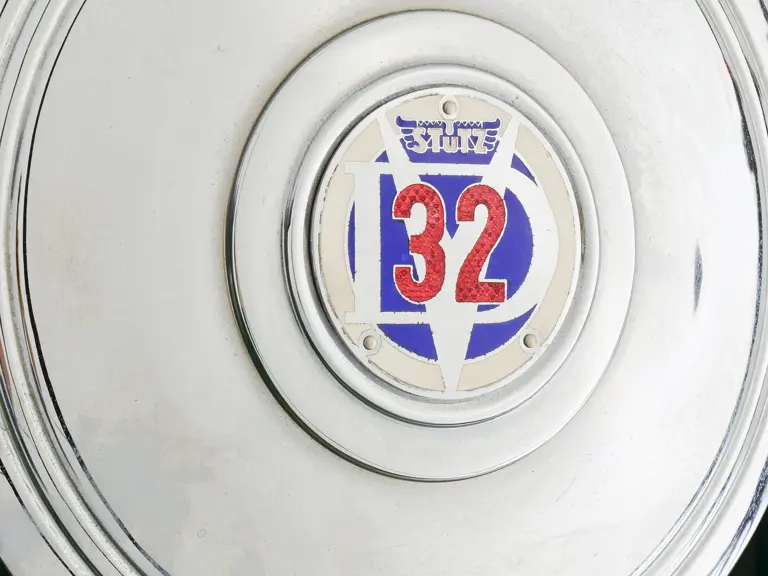
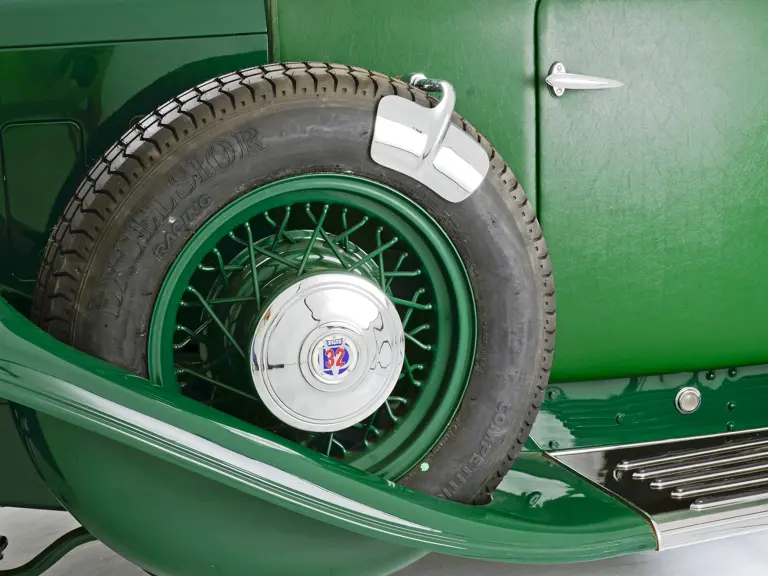

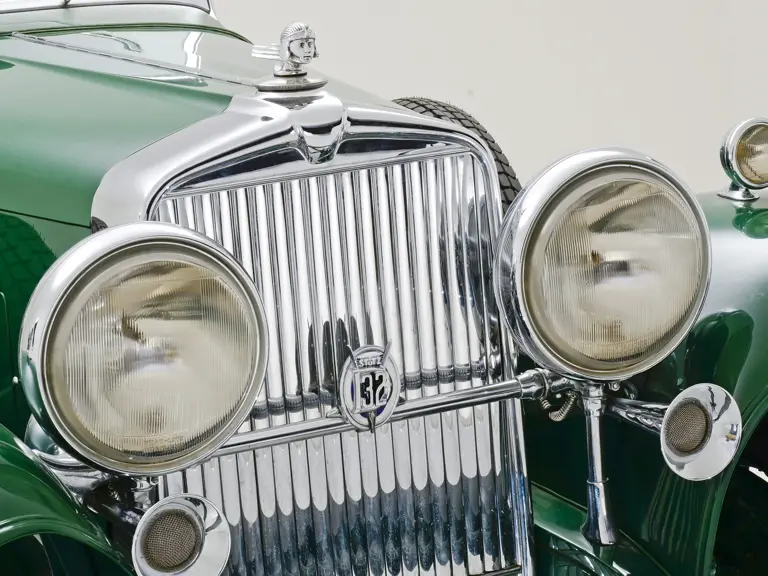
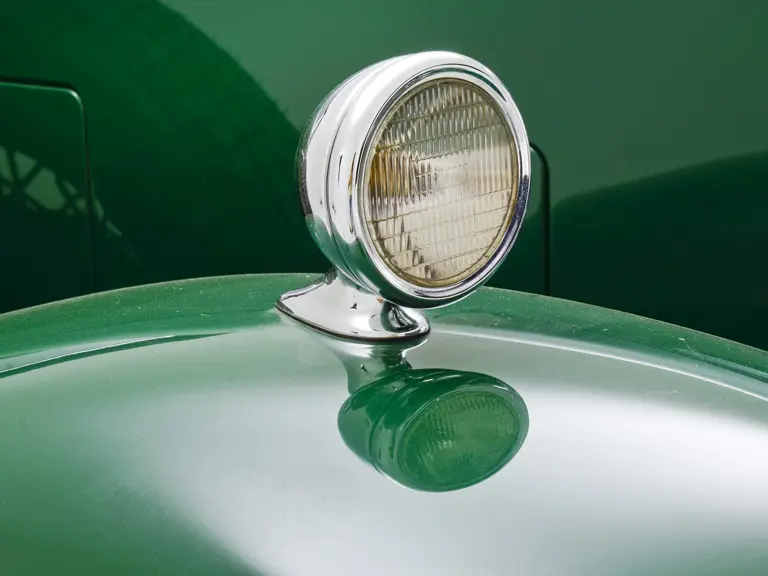

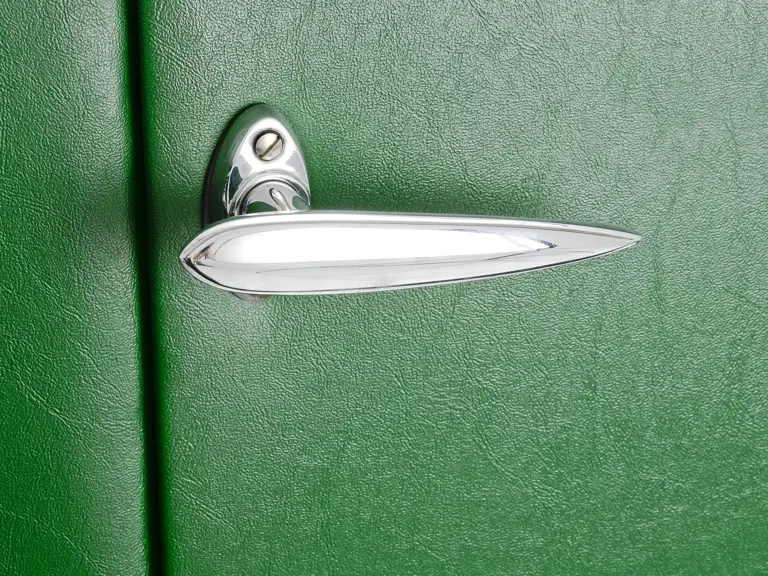
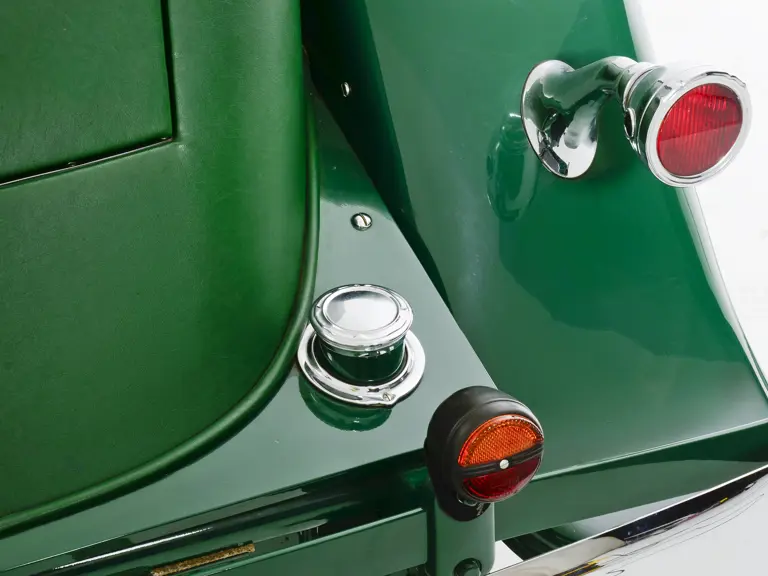

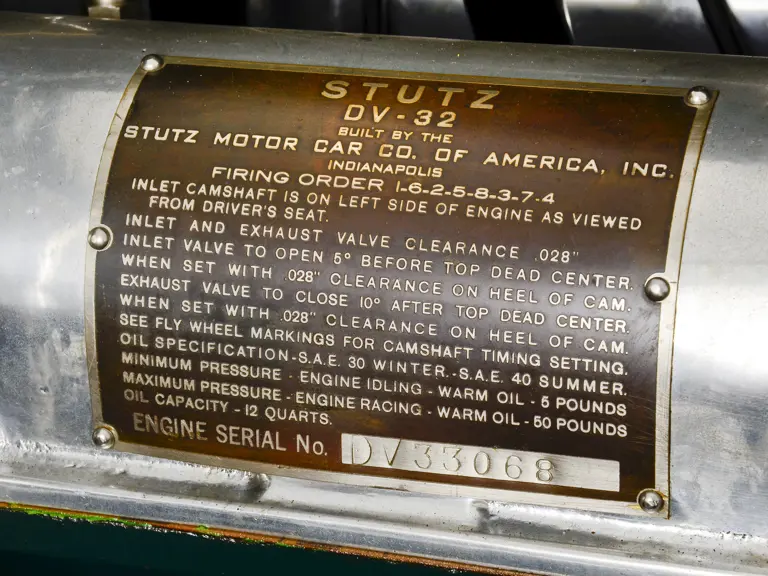
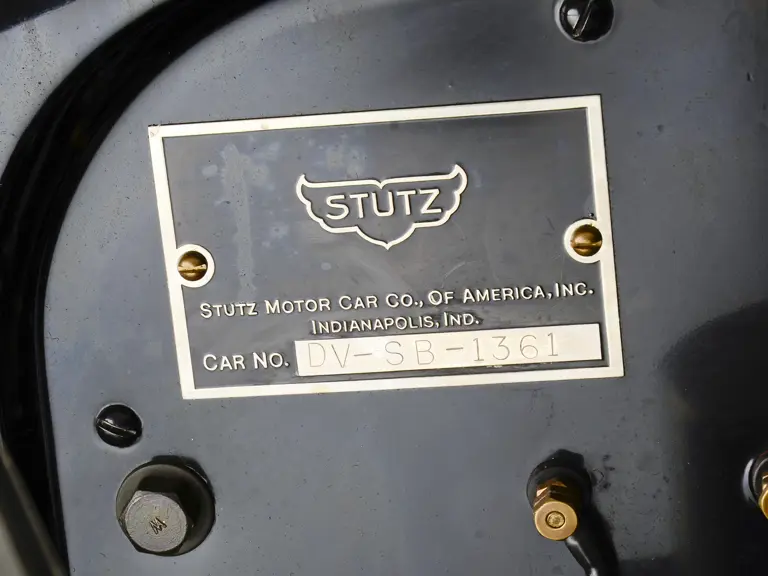
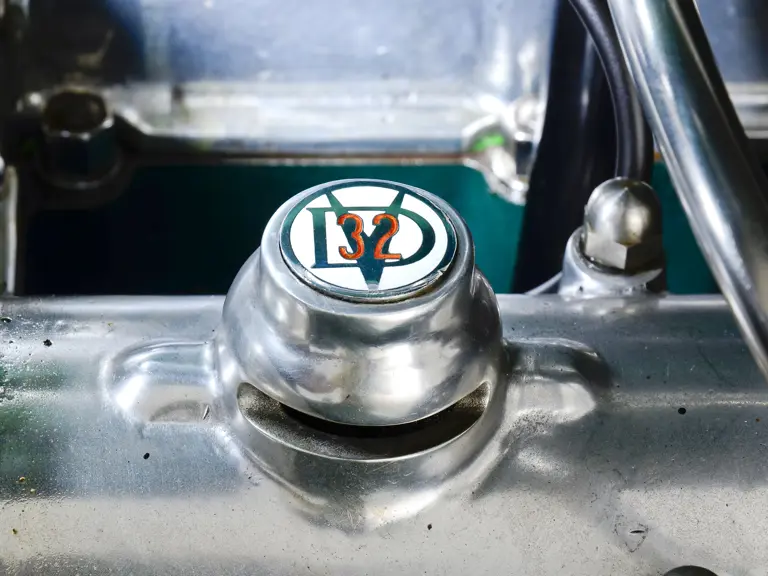

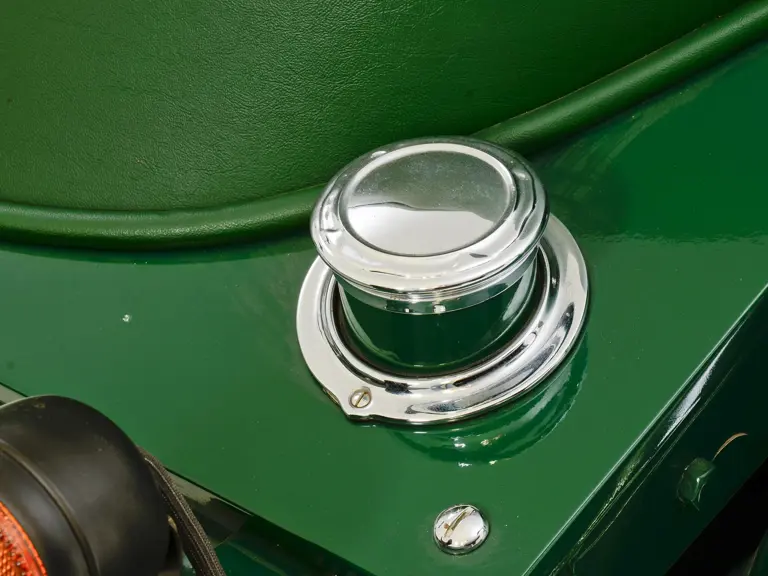
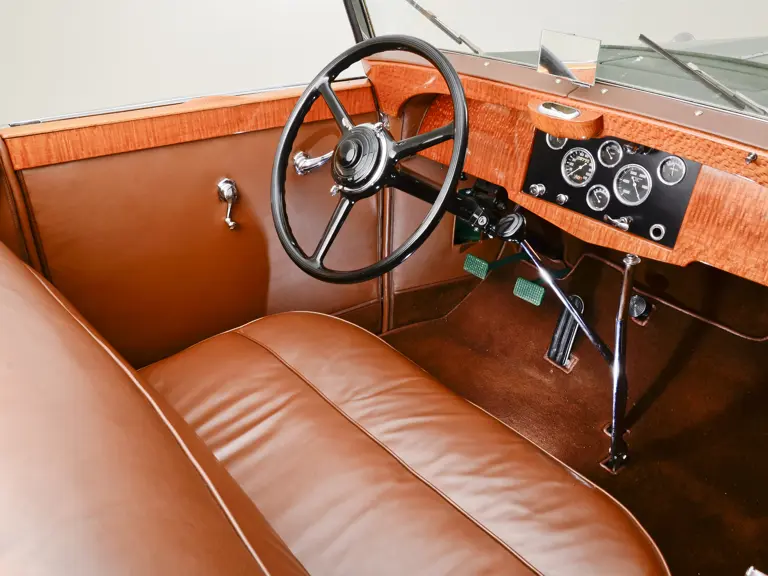


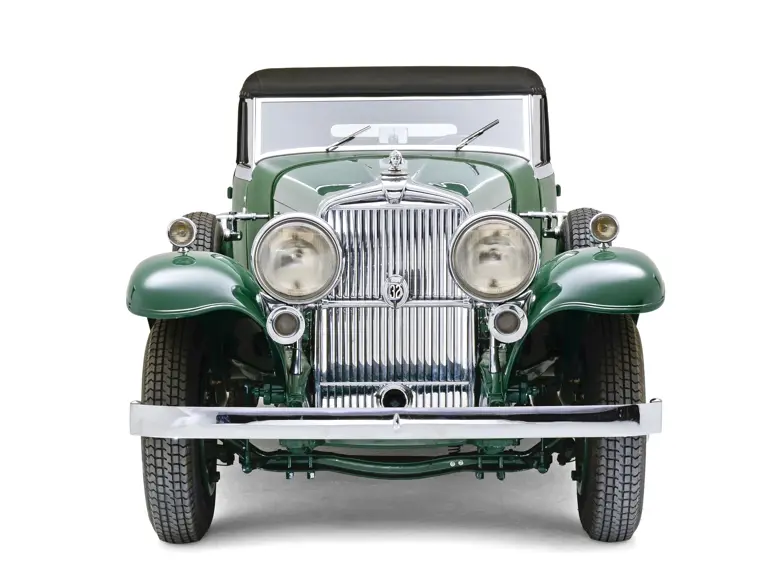
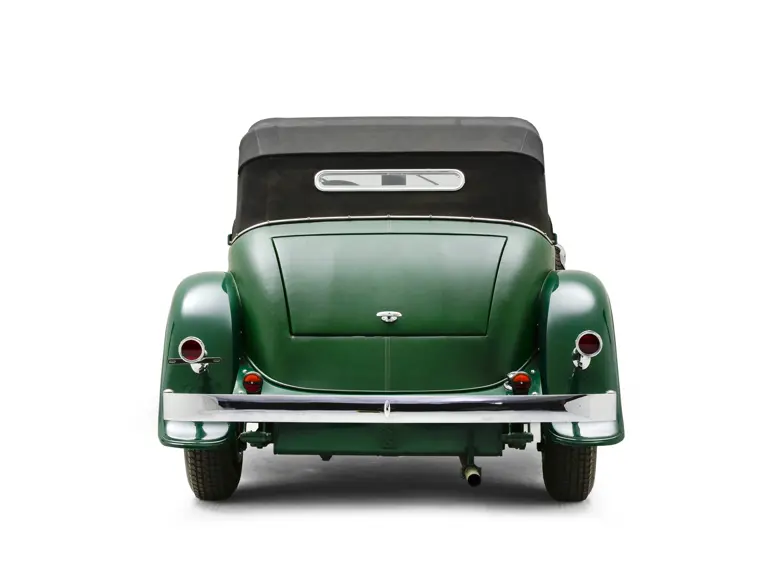
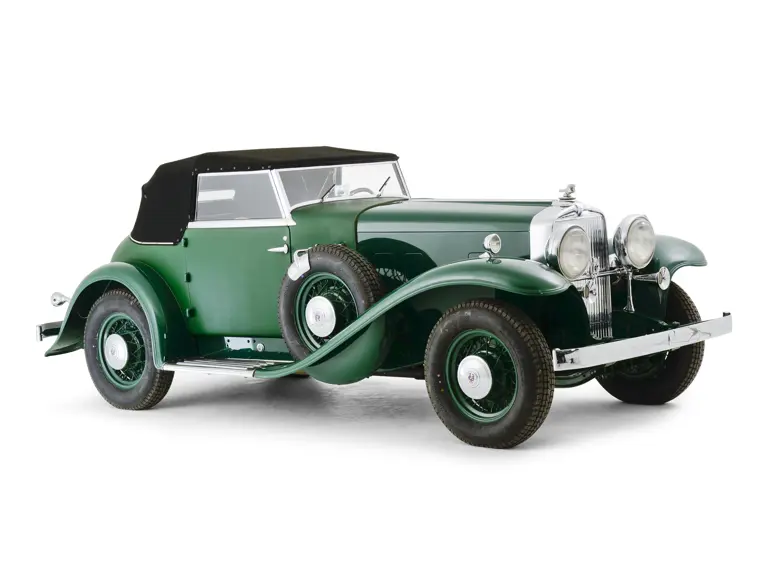

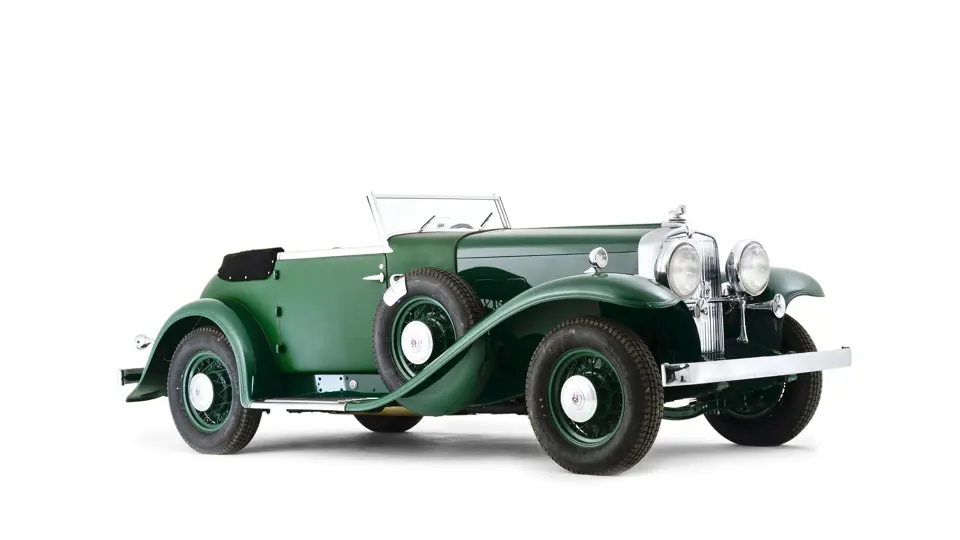
 | Monterey, California
| Monterey, California
